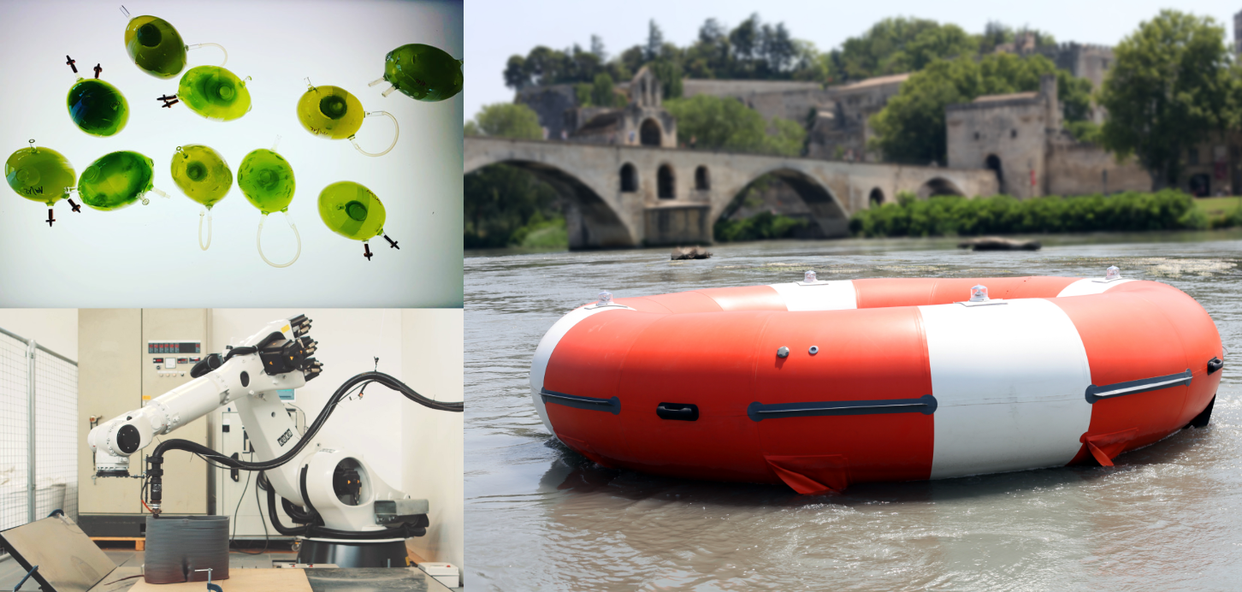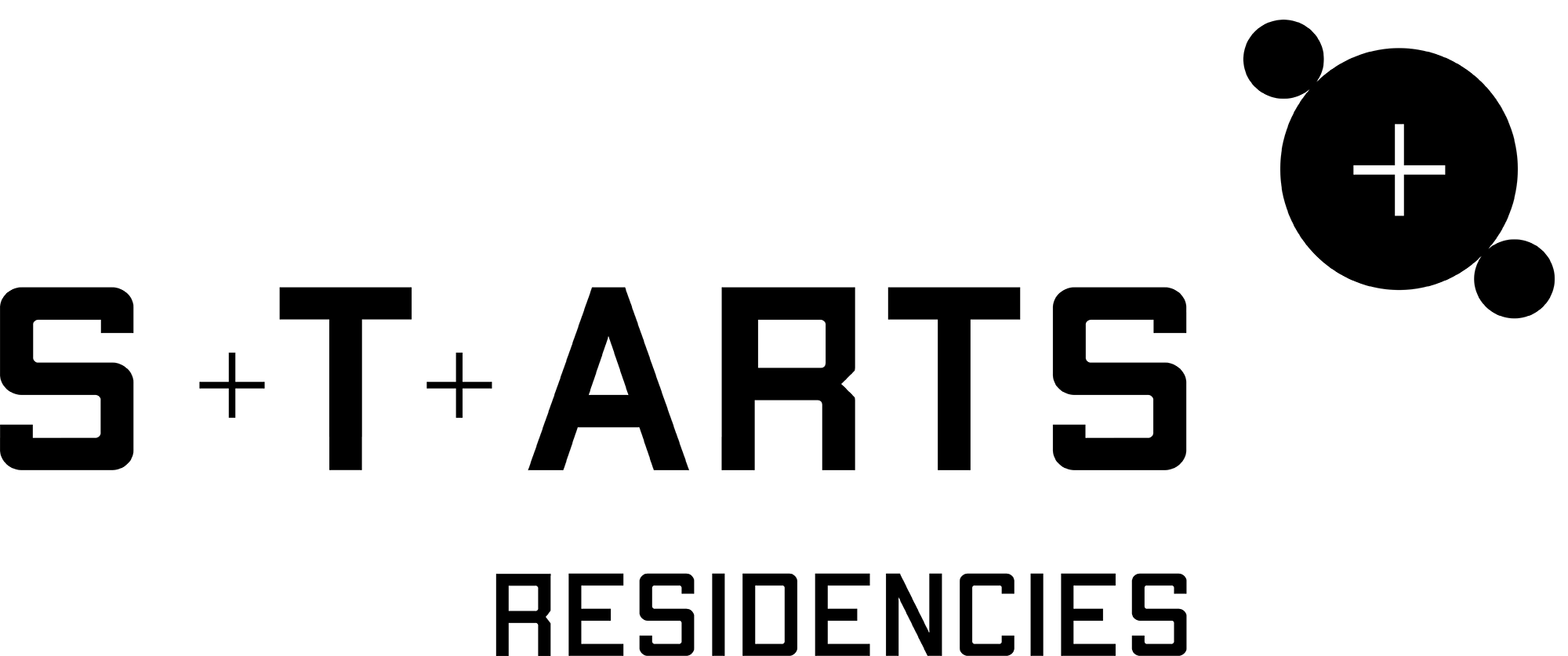Ecological explorations
FRENG
Participate in the residency teams' ecological exploration and discover how to control water pollution and monitor soil fertility, build a self-sustained beehive, assess our carbon footprint and create street furniture from recycled plastics. Additionally, explore unknown territories such as the planet Mars. The variety of artistic approaches reveals the importance of environmental issues.

BOOTHS [NEF]
Saturday and Sunday 12:00 to 19:00NefEcological Explorations
O.R.S
By HeHe in collaboration with the NANO2WATER Project (INL)
How to reveal water quality through art? The O.R.S (Orbital River Station) is a large-scale floating sculpture. Its form suggests an oversized life ring, alerting people to the potential danger that arises from flooding. The artists partnered with the Nano2Water team, which explores a portfolio of technologies including biosensing devices for selective recognition and capture of water contaminants. Together they work on a device embedding such technologies allowing water quality monitoring to be included on the O.R.S.
Saturday and Sunday 12:00 to 19:00NefEcological Explorations
The Crowd Plastic Waste Printing Project
by The New Raw in collaboration with the PTwist Project
Can civic engagement turn plastic waste into useful objects? This project explores the use of the city’s plastic waste as raw material & currency for products made with robotic 3D printing and citizen’s involvement. The idea is showcased with a temporary installation of 3D printed modular building blocks that promote civic participation & community building. The project encompasses multiple sustainability and social aspects, such as circular & exchange economy, and citizen empowerment.
EXHIBITION [AT6]
Saturday and Sunday 12:00 to 19:00AT6Ecological Explorations
L'origine du Monde
By AnneMarie Maes in collaboration with the Hybrid Forms Laboratory of Raoul Frese
Can we use bacteria as a power source? “L’origine du monde” is an artistic representation of research into the possibilities of cyanobacteria and micro-algae as a source for renewable energy and novel biodegradable materials. The installation shows a strongly enlarged bacterial chain made from glass cells. Every cell is filled with cyanobacteria producing real-time photosynthesis. Together they form a complex microbial population that communicates via quorum sensing and reduces CO2 emissions whilst producing oxygen and biopolymers.
Saturday and Sunday 12:00 to 19:00AT6Ecological Explorations
Continuum
By Félicie d’Estienne d’Orves in collaboration with the Eyes on Mars Project
Do you know what a sunset on Mars looks like? The team investigates the Martian landscape, allowing one to feel what s-he would feel if s-he was on the red planet, at the meeting point of artistic interpretation and scientific data. This video installation acts as a permanent window on the Martian landscape, whereas the “Bas-Reliefs” give an overview of the Martian topographic and its shadows. This declination throws new light on Mars that paradoxically invites the audience to reflect on its own planet.
PROJECTIONS [SALLE 200]
Saturday 15:50 & Sunday 16:15Salle 200Ecological Explorations
By the Code of Soil
A video by Kasia Molga & Robin Rimbaud in collaboration with the GROW Observatory
What if you could see and hear the soil speak? The artists worked with soil data as their material, creating soilscapes and data portraits of the GROW places. When launched on participating computers as a harmless “computer virus”, the artwork always looked and sounded differently, governed by data from GROW’s soil moisture sensors distributed all over Europe. Now made into a 3-channel video piece, it portrays a system of interconnected and interdependent processes conveying the condition of the land - unique and different to each place.
Saturday 16:10 & Sunday 16:30Salle 200Ecological Explorations
Becoming.eco(logical)
A video by Miha Tursič & Špela Petrič in collaboration with ARCTUR
How to visualize the impact of humans on carbon emissions? Like data journalists, the artists research climate data to build an understanding of the human condition within a changing environment. With this wide set of data and a model of anthropospheric carbon flows, running on the ARCTUR supercomputer, the artists visualised an understanding of human impacts on global carbon flows. As contemporary activists, they are using this project to advocate for more open and accessible research data while shedding the light on models and simulation biases.

